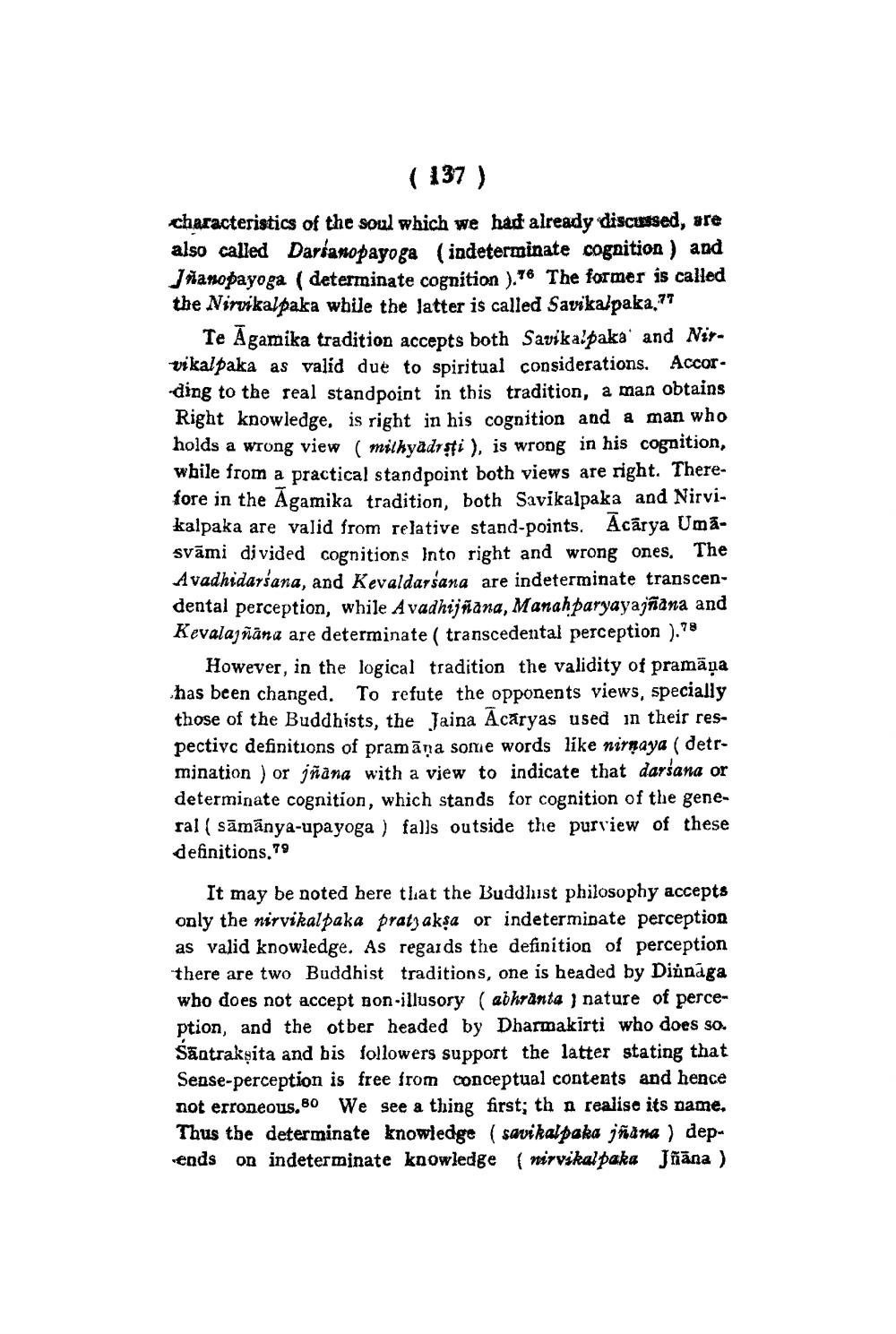________________
( 137 )
characteristics of the soul which we had already discussed, are also called Dartanopayoga (indeterminate cognition) and Jñanopayoga (determinate cognition ).76 The former is called the Nirvikalpaka while the latter is called Savikalpaka,77
Te Āgamika tradition accepts both Savikalpaka and Nirvikalpaka as valid due to spiritual considerations. According to the real standpoint in this tradition, a man obtains Right knowledge, is right in his cognition and a man who holds a wrong view (mithyadrşti), is wrong in his cognition, while from a practical standpoint both views are right. Therefore in the Agamika tradition, both Savikalpaka and Nirvikalpaka are valid from relative stand-points. Acārya Umāsvami divided cognitions Into right and wrong ones. The Avadhidarsana, and Kevaldarsana are indeterminate transcendental perception, while Avadhijñana, Manaḥparyayajñana and Kevalajñana are determinate ( transcedental perception ).78
However, in the logical tradition the validity of pramāņa has been changed. To refute the opponents views, specially those of the Buddhists, the Jaina Acaryas used in their respectivc definitions of pramana some words like nirnaya ( detrmination) or jñana with a view to indicate that darśana or determinate cognition, which stands for cognition of the general (samanya-upayoga) falls outside the purview of these definitions.79
It may be noted here that the Buddhist philosophy accepts only the nirvikalpaka pratyakṣa or indeterminate perception as valid knowledge. As regards the definition of perception there are two Buddhist traditions, one is headed by Dinnaga who does not accept non-illusory (abhranta) nature of perception, and the otber headed by Dharmakirti who does so. Śantrakṣita and bis followers support the latter stating that Sense-perception is free from conceptual contents and hence not erroneous.80 We see a thing first; th n realise its name. Thus the determinate knowledge (savikalpaka jñāna ) dep-ends on indeterminate knowledge (mirvikalpaka Jñāna)




